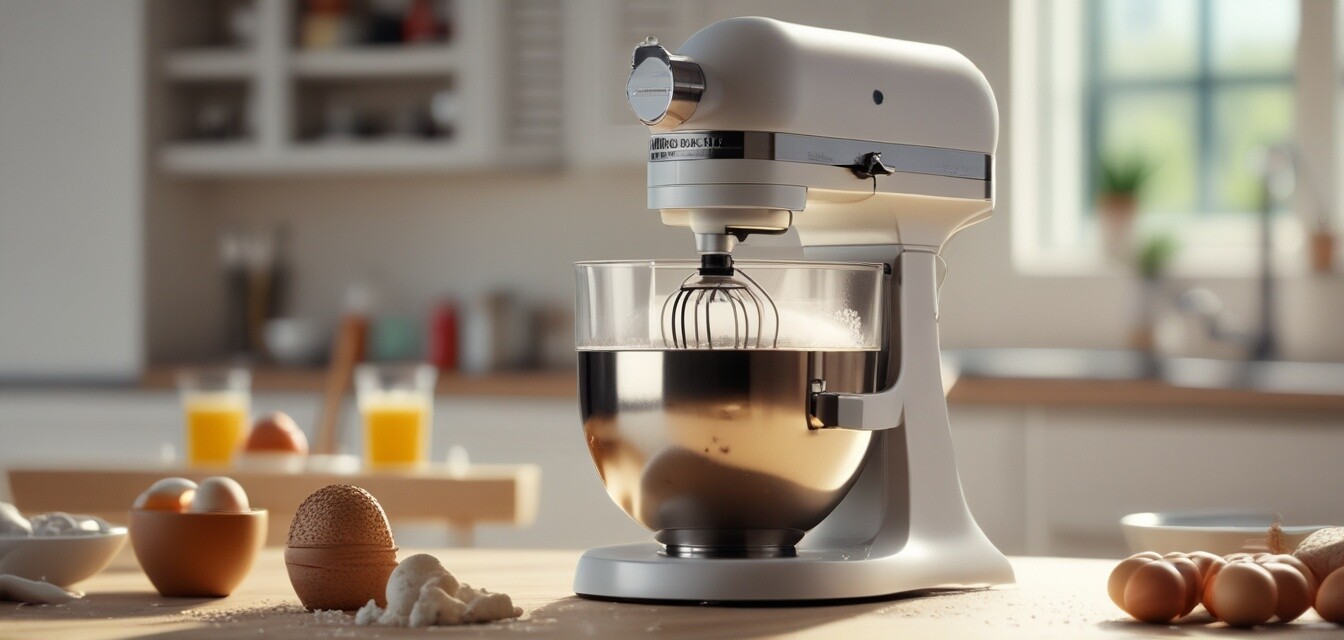
Disclosure: The FTC requires that this article indicate that it was created using AI and is not based on personal experience. It includes affiliate links, which means we may earn a commission if you purchase through these links at no extra cost to you. As Amazon Associates, we earn from qualifying purchases. Product recommendations and endorsements were generated by AI and do not reflect personal opinions or real-world use.
Best Practices for Operating Commercial Mixers
Key Takeaways
- Understand different mixer types for specific tasks.
- Regular maintenance is essential for performance.
- Follow proper mixing techniques for best results.
- Utilize attachments to expand functionality.
- Ensure safety precautions to avoid accidents.
Using a commercial mixer can drastically enhance your efficiency in preparing meals for large groups. These powerful machines save time and energy, allowing you to focus on other essential tasks in the kitchen. However, to maximize their potential, it’s important to follow best practices for operation. Let's delve into effective guidelines that will revolutionize your mixer experience and improve your kitchen workflow.
1. Understanding the types of commercial mixers
Before operating a commercial mixer, it is crucial to understand the different types available, as they serve unique purposes. Below is a comparison table that summarizes these mixers:
| Type of Mixer | Description | Best Use |
|---|---|---|
| Planetary Mixer | A versatile mixer with a rotating bowl and a stationary mixing arm. | Mixing batters, dough, and whipping cream. |
| Spiral Mixer | Designed for mixed dough with spiral arms that knead efficiently. | Baking heavy doughs for bread and pizza. |
| Hand Mixer | A portable mixer with beaters for light mixing tasks. | Merging small quantities or fluffy mixtures. |
2. Regular Maintenance
To ensure longevity and optimal performance of your commercial mixer, regular maintenance is key. Follow these tips:
- Clean after use: Wipe down surfaces and components promptly after use to prevent residue buildup.
- Check for wear and tear: Inspect parts such as beaters, bowls, and gaskets periodically for any signs of damage.
- Lubricate moving parts: Regular lubrication keeps the mixer running smoothly and prevents unnecessary friction.
3. Proper Mixing Techniques
Using the correct techniques while mixing can significantly impact your results. Here are some best practices to keep in mind:
- Start slow: Begin at a low speed to prevent ingredients from splattering out of the bowl.
- Gradually increase speed: Once ingredients are combined, increase the speed for thorough mixing.
- Scrape the bowl: Remember to stop the mixer occasionally to scrape down the sides, ensuring even mixing.
- Avoid over-mixing: Be wary of over-mixing, which can lead to tough textures in baked goods.
4. Utilizing Attachments Effectively
Commercial mixers come with a variety of attachments that can significantly expand their functionality. Here’s a brief overview of typical attachments and their uses:
| Attachment | Use |
|---|---|
| Flat Beater | Best for mixing cookies, cakes, and batters. |
| Wire Whip | Ideal for whipping cream, egg whites, and other aerated mixtures. |
| Dough Hook | Used for kneading dough for bread and pizza. |
5. Safety Precautions
Using a commercial mixer can pose risks if proper safety measures are not followed. Here are essential safety tips:
- Read the manual: Always familiarize yourself with the manufacturer's guidelines and safety instructions.
- Keep the area clear: Ensure the workspace around the mixer is free of clutter to avoid accidents.
- Turn off when not in use: Ensure the mixer is turned off and unplugged when you are not using it or changing attachments.
Conclusion
Mastering the art of using a commercial mixer not only boosts your cooking efficiency but also ensures delicious results. By understanding the types of mixers, maintaining them well, utilizing proper techniques, taking advantage of attachments, and following safety precautions, you can enhance your kitchen experience significantly.
For more helpful tips on cooking for groups, be sure to check out our guide on tips and techniques for cooking for groups. Explore our selection of commercial mixers that can elevate your cooking process.
Tips for beginners
- Start with simple recipes to build your confidence.
- Experiment with different attachments to understand their functions.
- Practice regularly to become familiar with the machine's capabilities.
Pros
- Enhances efficiency in food preparation.
- Versatile applications for various types of food.
- Improves consistency and quality of mixed products.
Cons
- Initial cost can be high.
- Requires space for storage and use.
- Can be heavy and difficult to move.